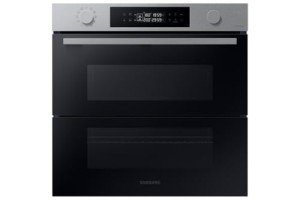The Most Hilarious Complaints We've Seen About Electric Integrated Oven
The Rise of Electric Integrated Ovens and Hobs: A Comprehensive Guide
Worldwide of modern kitchens, electric integrated ovens and hobs have ended up being vital appliances, using effectiveness, design, and convenience. As cooking practices evolve, so too do the technologies that make cooking simpler and more enjoyable. This short article digs into the functions, advantages, setup considerations, and maintenance ideas for electric integrated ovens and hobs, while addressing typical regularly asked questions.
What is an Electric Integrated Oven and Hob?
An electric integrated oven and hob is a mix cooking home appliance that flawlessly suits kitchen cabinetry. Developed to enhance space and visual appeal, these appliances use the double performance of an oven and a hob (cooktop) without jeopardizing on efficiency.
Key Features of Electric Integrated Ovens and Hobs
- Space-Saving Design: These appliances are built to fit neatly into kitchen systems, taking full advantage of available area.
- Touch Control Panels: Many models include touch-sensitive controls for easy operation and smooth appearance.
- Advanced Cooking Functions: Options like convection baking, grilling, and steaming cater to different cooking designs.
- Energy Efficiency: Electric integrated ovens normally offer much better thermal effectiveness compared to conventional gas models.
- Security Features: Child locks, automated shut-off, and heat indicators improve security throughout cooking.
Benefits of Electric Integrated Ovens and Hobs
The adoption of electric integrated ovens and hobs in homes includes numerous advantages that interest a wide variety of cooking lovers, from newbie cooks to professional chefs. Here are a few of the most significant advantages:
1. Effectiveness and Consistency
- Uniform Cooking: Electric ovens and hobs supply constant heat circulation, resulting in evenly cooked food.
- Reduced Cooking Times: Advanced technologies, such as induction heating, can substantially minimize cooking times.
2. Easy to Clean
- Smooth Surfaces: The smooth surfaces of integrated styles get rid of food traps, making them simple to clean down.
- Self-Cleaning Options: Many modern-day ovens come with self-cleaning features that simplify upkeep.
3. Aesthetics
- Modern Look: An integrated design supplies a unified look in the kitchen, making the space appear more contemporary and curated.
4. Flexibility
- Multi-Functionality: Cooking alternatives range from baking and grilling to frying and simmering, accommodating diverse cooking needs.
- Time-Saving: Can cook multiple dishes simultaneously, optimizing meal preparation.
5. Cost-Effectiveness
- Lower Energy Bills: Electric appliances are usually more effective, resulting in prospective cost savings on energy bills gradually.
Installation Considerations
Integrating electric ovens and hobs into your kitchen requires correct planning and consideration. Here are some important elements to keep in mind:
- Space Measurement: Ensure that the dimensions of the device line up with the designated setup area.
- Electrical Requirements: Check for adequate electrical supply, consisting of voltage and amperage to support the device.
- Ventilation Needs: While electric appliances do not need gas ventilation, sufficient space for air flow is still needed.
- Cabinet Compatibility: Ensure cabinets can support the combined weight of the oven and hob.
- Expert Installation: Engaging with a qualified technician is recommended for safe and compliant installation.
Upkeep Tips for Electric Integrated Ovens and Hobs
Keeping an electric integrated oven and hob makes sure longevity and optimum performance. Here are some upkeep practices:
- Regular Cleaning: Wipe down surface areas frequently and ensure spillages are cleaned as soon as possible.
- Check Seals: Ensure that door seals are undamaged to avoid heat loss, which can impact cooking efficiency.
- Self-Cleaning Cycle: Utilize the self-cleaning function if available, at least as soon as every few months.
- Inspect Wiring and Cords: Check for harmed cables or connections to prevent electrical hazards.
- Arrange Professional Servicing: Regularly scheduled service can identify concerns before they end up being substantial problems.
Often Asked Questions (FAQs)
1. Are electric ovens better than gas ovens?
Electric ovens supply more constant heat and often have features like convection cooking, which can boost the cooking experience. Numerous users discover them easier to clean up and much safer than gas ovens.
2. What is the difference between induction and ceramic hobs?
Induction hobs utilize magnetic fields to heat pots and pans directly, while ceramic hobs use electric coils beneath a glass surface area to heat up the cooking surface. Induction hobs are usually more energy-efficient and much faster than ceramic alternatives.
3. Can browse around here set up an electric oven and hob myself?
While it is possible for experienced DIY enthusiasts to install their appliances, professional installation is recommended to guarantee compliance with safety requirements and regional guidelines.
4. How do I know if my oven is carrying out effectively?
Screen cooking times and temperature level settings. If food is consistently undercooked or overcooked, it may show that the oven needs recalibration or servicing.
5. How can I enhance the life-span of my electric oven and hob?
Routine cleansing, appropriate use, and regular professional maintenance can substantially extend the life expectancy of these appliances. Avoiding fast temperature level changes can also help in preserving their stability.
Electric integrated ovens and hobs represent the advancement of cooking appliances, marrying functionality with modern design. Their performance, ease of usage, and visual appeal make them an outstanding option for contemporary cooking areas. As cooking technology continues to advance, both home cooks and cooking specialists can anticipate even greater innovations in the world of electric integrated cooking options.
With the right maintenance and installation practices, these appliances can boost both the cooking experience and the general performance of the kitchen area.
